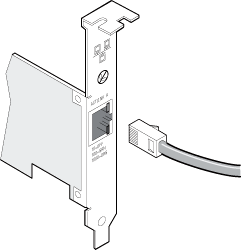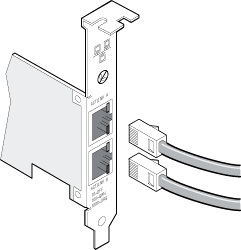-
For 1000 Mbps operation (1000BaseT), use Category 5 or better (must be 4-pair wiring). Make sure you use Category 5 cable that complies with the TIA-568 wiring specification. For more information on this specification, see the Telecommunications Industry Association's website: www.tiaonline.org.
| Note: To insure compliance with CISPR 24 and the EUís EN55024, devices based on the 82576 controller should be used only with CAT 5E shielded cables that are properly terminated according to the recommendations in EN50174-2. |
-
For 100 Mbps operation (100BaseTX), use Category 5 wiring or better.
-
For 10 Mbps operation (10BaseT), use Category 3 wiring or better.
| Caution: If using less than 4-pair cabling, you must manually configure the speed and duplex setting of the adapter and the link partner. In addition, with 2- and 3-pair cabling the adapter can only achieve speeds of up to 100Mbps. |
-
If you are using this adapter in a residential environment (at any speed), use Category 5 or better wiring. If the cable runs between rooms or through walls and/or ceilings, it should be plenum-rated for fire safety.
In all cases:
-
Segment length is limited to 100 meters.
-
The adapter must be connected to a compatible link partner, and may be set to auto-negotiate speed and duplex.
-
Intel® Gigabit Network Adapters using copper connections automatically accommodate either MDI or MDI-X connections. The auto-MDI-X feature of Intel Gigabit Network adapters allows you to directly connect two adapters without using a cross-over cable.

Single-port models

Dual-port models